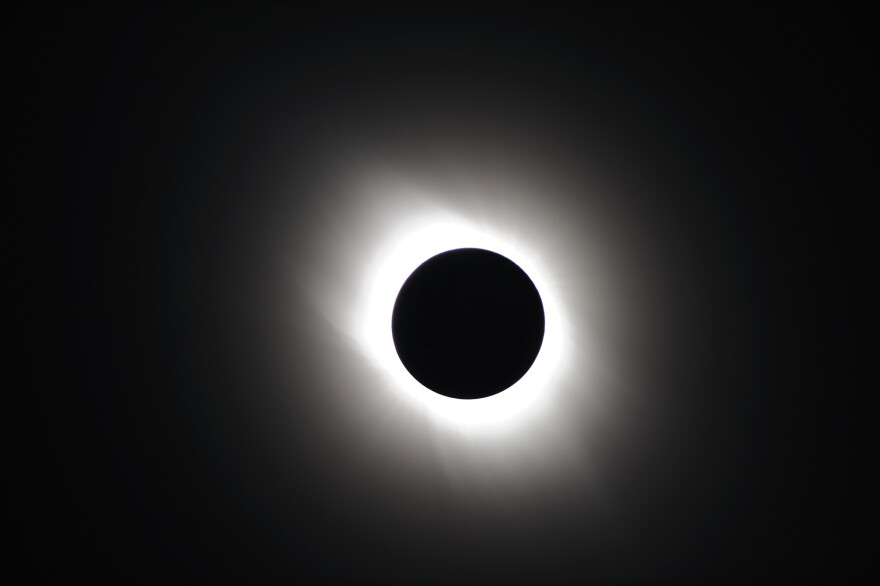With our free press under threat and federal funding for public media gone, your support matters more than ever. Help keep the LAist newsroom strong, become a monthly member or increase your support today.
North America to see first total solar eclipse since 1979

In a year, North America will see its the first total solar eclipse since the Bee Gees topped the charts – and some sky gazers are already booking their hotel rooms.
“Oh, it’s bigger than the Super Bowl, much bigger," said Mike Kentrianakis, self proclaimed eclipse chaser who works with the American Astronomical Society. He's been traveling around the world in search of astronomical events since 1979, which was the last time the U.S. experienced a total solar eclipse.
A solar eclipse occurs when the moon crosses between the earth and the sun, blocking it out, turning day to night.
Totality, where the sun, the moon and the Earth are perfectly aligned, only lasts a few minutes, but Kentrianakis describes it as life changing.
"It will be unlike anything that was told to them, or explained to them or shown to them. They will be taken aback and it will forever be impressed upon them, for life," he said. "We’re really a part of the Universe, the solar system and I know it sounds space cadet and all, but it’s not that, it’s a natural phenomenon."
Kentrianakis once followed an eclipse in an airplane. The video went viral on YouTube.
The next full solar eclipse on August 21, 2017 "is unlike any in 99 years, where it's actually going from coast to coast," he said. His group, NASA and other organizations have had conferences on it.
Kentrianakis personally identified the perfect spots to watch the total solar eclipse, which will be ona narrow path about 70 miles wide between Oregon and South Carolina. Those outside of that zone, including in Southern California, will have to settle for a partial eclipse.
People who miss next year's eclipse won't have to wait another 38 years. The next total solar eclipse that can be seen in North America after that will be in 2024.








